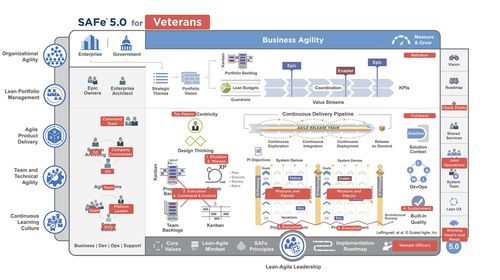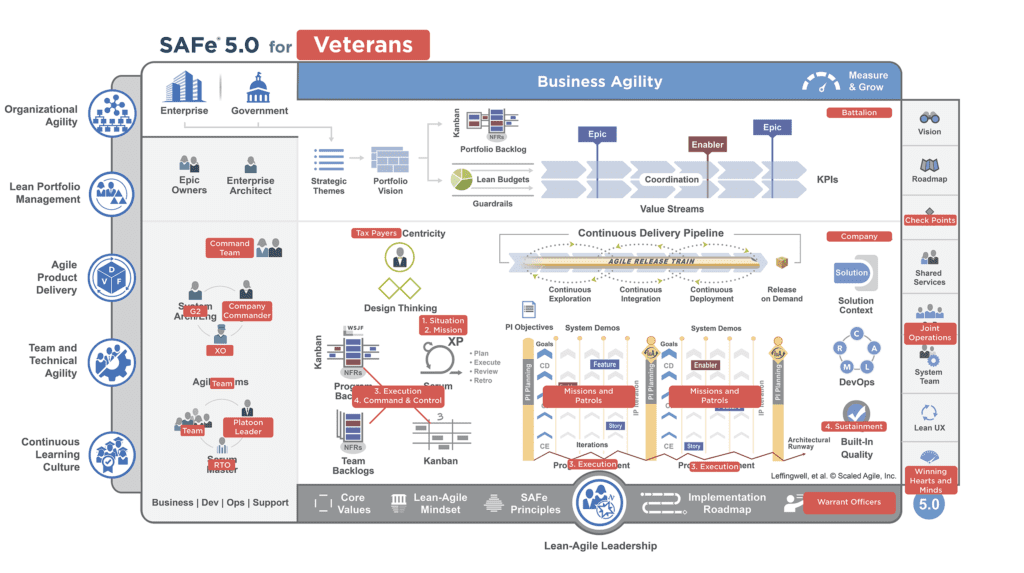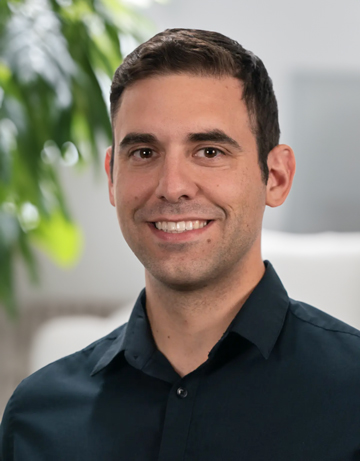
In 2006, I enlisted in the U.S. Army as a Forward Observer. Basically, that meant I spotted artillery rounds to ensure they landed on targets. Every time I neared the end of my contract, I reenlisted to avoid facing the fact that I had no idea how to translate my experience outside of the military. What was I supposed to do: walk into a prospective employer’s office and say that I was really good at land navigation, and ensuring close air support and artillery rounds hit targets? Yeah, not so much.
So, I changed my job to a Criminal Investigation Division Special Agent—think Naval Criminal Investigative Service (NCIS), FBI, or Secret Service but for the Army. I figured that my expertise in areas like interrogation, crime-scene examinations, digital forensics, crisis negotiation, protective service operations, and undercover and surveillance operations would definitely transfer directly to non-law enforcement jobs in the civilian world. Again, not so much.
So, time for plan B. I took what I knew, retired from the military, and got a job at a bank making just about minimum wage. With 10 years of leadership experience, I was barely providing for my family. When my 401k was just about empty, I decided I needed to find a career that could help me give my family the life they deserved.
Making the transition
This isn’t a unique story. Servicemembers looking to get out of the military face two big challenges. Either they can’t commit to leaving or—if they do commit—their roles in the military don’t translate to civilian occupations. Which means they end up in dead-end jobs. The stress adds up: veterans holding cardboard signs asking for help and money appear on every corner, substance abuse/recovery facilities are filled with green duffle bags, and even worse, veterans are committing suicide. There’s a scary statistic cited in a recent report that in 2017, nearly 17 veterans died by suicide each day. It shouldn’t be this hard for transitioning freedom fighters.
But here’s some good news: shifting to a position in an Agile environment can help open doors for veterans, relieve some of that stress, and provide a lucrative career. Remember that dead-end bank job and my determination to find something better? I found it as a Scrum Master at Scaled Agile, and the skills I’ve learned here translate almost perfectly to military roles.
In this blog post, I’ll explain how the roles within the Scaled Agile Framework® (SAFe®) correlate to military positions. I relied on my background and experience to translate the roles into terms aligned with the U.S. Army, U.S. Marine Corps, and the Special Operations community, but veterans worldwide can relate to this.
Agile teams
When you mention Agile teams, most people think about software developers congregating in incubator garages across Silicon Valley. While these folks can be pretty Agile, I personally think that U.S. military teams are the most Agile because they’re on the ground making life-changing decisions instantly. These teams take the most up-to-date information and intelligence and iterate on the plan. Likely, this plan started with a conversation, moved to some sort of slide deck, then to the teams who practiced it using mock cities, sand tables, shoot houses, and other high-speed planning techniques—all to all be derailed by an IED, small arms fire, or chasing terrorists down an unexpected tunnel system. It makes me think of the famous quote often attributed to Dwight Eisenhower: “Plans are worthless, but planning is everything.”
In the military especially, we need Agile leaders who don’t get stuck by analysis paralysis, but rather who can prioritize, execute, and coach their team to get the job done. Aside from the life-and-death implications, the only big difference between working in the military and working in an Agile environment would be that Agile encourages working at a sustainable pace. We want to ensure predictability—always burning the midnight oil creates an unstable and unpredictable environment.
Within SAFe, Agile teams are the foundation of and critical to any Agile transformation. Fortunately, Agile roles translate easily for transitioning veterans in part because Agile teams are essentially a patrol. Using the basic makeup of a patrol, you have a radio transmitter operator (RTO), team leader, pointman, and the gunners on each side.
The RTO is essentially the Scrum Master. This is the person who provides clear and concise communication organization-wide, and removes impediments for the Agile team if it can’t on its own. The Scrum Master has a wider role as well, but I’ll cover that later in this post.
The pointman is most compared to the Product Owner. This person represents the customer on the team and helps the team prioritize its work, guiding it to deliver value that’s aligned with what customers want and with the organization’s goals.

The remaining members of the patrol are considered the Agile team. Because they’re the folks with the intel on the ground, they know what needs to be done to achieve the mission—similar to what’s called the Program Increment (PI) Objectives in an Agile environment. The Agile team can take the priorities from the Product Owner, provide realistic feedback on what is actually achievable, and complete the mission.
To be successful, Agile teams and fire teams need leaders who can put the team/mission/people above themselves. Leaders provide the intent, the motivation, and the way to get people on the team to act.
Frameworks
In military environments, leaders are responsible for defining the concept of the operation in time, space, purpose, and resources (ATP 3-21.8). The Operational Framework greatly supports that by defining associated vocabulary and a way to organize.
In a civilian workplace, leaders are responsible for the same successful outcomes, especially in Agile environments. SAFe is one approach enterprises use to support their transformations and provide full transparency across the entire organization. There’s definitely a learning curve associated with SAFe, and understanding the colloquialisms and jargon is key to a veteran’s transition in any workplace.
To illustrate this, I labeled applicable areas of the SAFe Big Picture with common military terms. Use your mouse to zoom over each image for a closer look.

The SAFe Big Picture has three configurations—Portfolio, Large Solution, and Essential. These translate to Division, Battalion, and Company levels.
Within Essential SAFe, there are key positions on the left side of the Big Picture—the Agile Team (which consists of 5–11 people) and two specialty roles: the Scrum Master and the Product Owner. Correlating these to military roles, the team is the squad or team, the Scrum Master is the RTO, and the Product Owner is the pointman.

Also in Essential SAFe, above the Agile Team layer, are three additional roles:
- The System Architect/Engineer, which is your S2 or company-level intel shop
- Product Management, which is your Company Commander
- The Release Train Engineer, who’s in charge of keeping the Agile Release Train (ART) on the rails, closely relates to the Executive Officer (XO)
Multiple Agile Teams are part of the ART, which is a company-sized element of people navigating the Agile world. The ART has many mandatory events. To kick off a Program Increment (PI) or deployment—which is a set duration of time, usually a quarter of the year—all members of the ART attend PI Planning. This is where all teams on the ART provide the PI Objectives to the company and plan each of their iterations.
In the context of an Operation Order (OPORD) within the US Army, here’s how Agile works:
- Situation can be rolled into the PI Objectives
- Mission can be rolled into the PI Objectives
- Execution is how the Agile Team operates—it can use Scrum, XP, Kanban, Design Thinking, and other techniques to satisfy the Customer (taxpayers)
- Command & Control happens throughout the entire delivery pipeline by means of Daily Stand-ups, Scrum of Scrums, Product Owner Syncs, and other meetings, which focus on consistent communication and updates.
- The Sustainment phase of the OPORD directly relates to Built-In Quality and the Architectural Runway.
The double diamonds representing Design Thinking on the Big Picture basically represent sand-table planning and shoot house for the actual mission. Design Thinking allows team members to diverge and converge thinking to release the right product at the right time.
On the bottom right of the Big Picture is the SAFe Program Consultant (SPC)—the change agent who leads all levels of an organization through a Lean-Agile transformation at scale by training, coaching, facilitating, and mentoring. This servant leader plays a critical role by applying expert knowledge of SAFe, and most closely aligns to a Warrant Officer.
Why SAFe?
One of the biggest reasons to go from boots to SAFe is the doors it can open. There are more than 300 Scaled Agile partners, and countless veteran-friendly enterprises undergoing agile transformations—including government contractors and U.S. government entities. As a veteran, once you understand the terminology, your opportunities in the Agile space as a Scrum Master, Product Owner, Agile Coach, Release Train Engineer, SPC (and many others) are virtually endless.
Get started: paying for SAFe Certifications
Taking a SAFe course and earning a certification are the first steps toward jump-starting your career in the Agile space. And there are ways for veterans to get financial assistance.
VR & E program
Through eBenefits associated with the U.S. Department of Veterans Affairs (VA), eligible Veterans and Service members can apply for either Vocational Rehabilitation and Employment (VR&E) benefits or Education/Career Counseling. It’s simple to apply; just follow these steps on the VA website:

- Log into your eBenefits account.
- Select “Additional Benefits” from your dashboard.
- Select “Vocational Rehabilitation and Employment Program.” Be sure to read the program information, update your contact information, and apply for either the “Vocational Rehabilitation and Employment Program” or “Education/Career Counseling.”
- If you’re deemed eligible, you’ll be invited to attend an in-person orientation session at the nearest VA Regional Office.
Servicemembers with a disability that began or became worse during active duty and who haven’t yet received a service-connected disability (SCD) rating, don’t need to wait to apply (see VA Form 28-0588 for further instructions). Additionally, ill or injured Servicemembers who haven’t yet received an SCD rating don’t need to wait to apply. Servicemembers expecting a discharge other than dishonorable and who possess a VA memorandum or Integrated Disability Evaluation System (IDES) rating of 20 percent or more—as well as Servicemembers currently going through a Physical Evaluation Board—may be eligible to receive VR&E services.
Just ask
Many of our 300+ Scaled Agile partners that provide SAFe training also offer military discounts. All you need to do is lean forward in the foxhole and send an email to these trainers to find out. Remember, you can catch more bees with honey, so be nice and polite when asking for a discount.
Check out these other helpful links to learn more about SAFe, courses, certification, and partners:
About Clint Gershenson

As a Scrum Master for the Learning and Certification team at Scaled Agile, Clint thrives at enhancing capabilities across teams by combining his expertise as an Agile coach at multiple technical companies with his experiences as a 10-year U.S. Army veteran. He’s also a family man who’s had the pleasure of watching Frozen 200+ times and the Grinch 100+ times with his young son and daughter.
Share:
Back to: All Blog Posts
Next: Join Me at the 2020 Virtual European SAFe® Summit